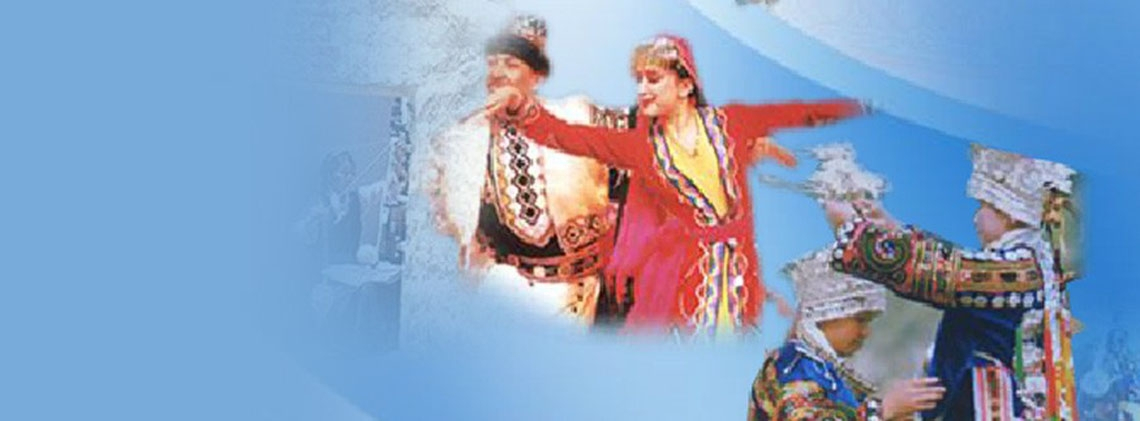
Ethnic Groups in Contemporary China
Splendid
Chi Culture
Topic
Ethnic Groups in Contemporary China
The major ethnic groups in contemporary China include the following:
Manchu, Hezhe, Ewenke (Evenki), Oroqen, Daur, Korean, Mongol, Xibo, Uzbek, Uighur, Tu, Tatar, Tajik, Salar, Kyrgyz, Hui, Kazahk, Russian, Dongxiang, Bonan, Yugur, Gelao, Achang, Bai, Blang, Bouyei, Tibetan, Dai, De’ang, Si, Derung, Hani, Jinuo, Jingpo, Lahu, Lisu, Lhoba, Monba, Hmong, Nakhi, Nu, Pumi, Qiang, Shui, Wa, Yi, Yao, Tujia, She, Mulao, Maonan, Li, Gin, Gaoshan, Zhuang.
In the course of history, each group has created its own unique culture in terms of festivals, courtship, marriage customs, burial, religion, food, clothing, music and dance, arts and crafts.
The celebrations and festivals of these ethnic groups embody their respective traditions and customs. There are many diverse types of festivals and holidays; some of them are for the New Year, bumper harvests, commemorating days important to the community, customary holidays, religious holidays, as well as agricultural, trade and commercial, entertainment, sports, and social festivals.
Each ethnic group has its own distinctive courtship, marriage, and burial customs. The most popular forms of courtship incorporate singing and dancing; some even use games or sports for the young people to express their intentions. Marriage customs vary, but can be roughly divided into four categories: plunder marriage, marriage by service, levirate (compulsory marriage of a widow to a brother of her deceased husband), and trial marriage. As for burial methods, there are sky burial, ground burial (inhumation), water burial, cremation, stupa burial, hanging coffin burial, boat-coffin burial, tree burial, and cliff burial. The courtship, marriage, and burial rituals reveal the cultural associations of each group’s religion, philosophy, values, and ethical norms.
China is a multi-ethnic and multi-religious country where religions from all over the world co-exist with primitive shamanism. Buddhism, Christianity, and Islam were introduced to China from foreign lands. Once a foreign religion was transmitted to China, it either it integrated with traditional Chinese culture, or they influenced one another. Daoism, which is indigenous to China, has burgeoned and spread throughout the country. The religion of each ethnic group shows how it influences that group’s customs, social status, organizations, activities, food, and clothing.
The three major economic activities of Chinese ethnic groups are hunting and fishing, animal husbandry, and farming. These have developed into three different types of food production with distinctive features. The varied foods of these ethnic groups have enriched Chinese food culture.
As one of the most basic needs of human life, clothing, with personal adornments, in each of the groups are rich in style—whether headgear or footwear, upper or lower garments, jewelry or other accessaries—each has its own characteristics. Ethnic clothing with its wide variety reflects not only the group’s living environment and methods of economic production, but also religion, psychology, aesthetic values, arts, crafts, and the cultural history of the group.
There is also a wide diversity in the song and music created by each group. In addition to work chants, songs sung in the fields or mountains, ditties, and multi-part folk songs, there are songs for children, lullabies, pastoral songs, hunting songs, boat songs, love songs, and songs for religious sacrifices and ceremonies. The various dancing arts are also rich and colorful and can be classified into the categories of sacrificial, work, and entertainment. Among dance forms, there are dances for single performers as well as pieces for two, three, and more. Sometimes, a dance is performed on stage, but many people enjoy dancing just for themselves and neighbors.
The arts and crafts of ethnic groups in China reflect their aesthetic sensibility and emotions as well. These further reflect the distinctive features of their traditions and life styles. These arts and crafts include weaving, lacquerware, metal ware, sculpture, pottery, paper-cutting, batik, and tie-dye. They each have practical and high aesthetic value in daily life.



